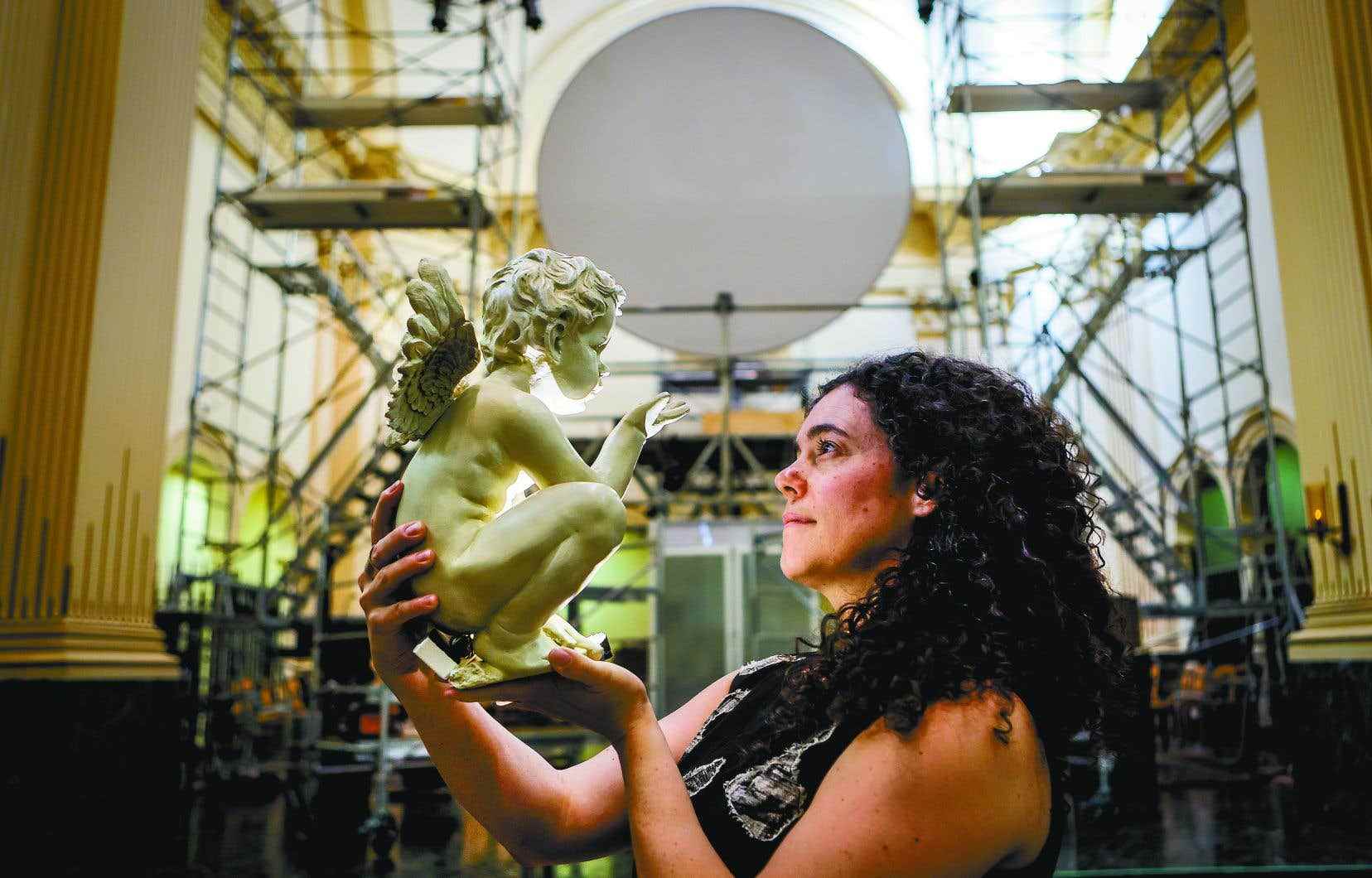After in particular a warehouse (Room/Unit B1717) or a private house (Sleepwalkers), the new show in situ concocted by Geneviève L. Blais invites us this time to the former chapel of the Hospitallers, on the avenue des Pins. A beautiful place “steeped in history”, but which remains to be discovered for many Montrealers.
Big fan of the German author Anja Hilling, the director fell in love with her play Nostalgia 2175, which she compares to “a storm of emotions, of incredible power”. She was touched by the beauty of this “story-poem”. “It’s a mother who talks to her child, just before giving birth, not knowing if she will survive. What should she tell him? What light to transmit to a child who is born in a world in ruins? And she asks herself this question: is it possible to make this somewhat crazy act of faith, to believe in following the world?
Because, as in black animal sadness (edited by Claude Poissant at Espace Go in 2012), the playwright sets up a context devastated by global warming. Here, a dystopian future: in 2175, humanity struggles to survive in a temperature of 60°C. Natural fertilization has become an extremely rare miracle, and childbirth, an almost certain death sentence for women. But the ecological crisis we are going through “is not the central subject of the play. It is above all a love story”.
And a very sensory text, as Geneviève L. Blais likes them. “The skin is at the heart of the story. It’s an impossible love story with a burn victim who can’t be touched. The only time to [contact physique] between them is when he tattoos her. This alive flayed man, wounded by trauma, works as a dermaplast painter: in this world where life in the open air is impossible, he creates tapestries based on human flesh – the best protection against heat – to cover the walls of houses , on which he tattoos scenes of happiness outside. Images taken from old films, “archives which are like the memory of this vanished world”.
In Nostalgia 2175, art therefore proves to be a “space of breathing, of beauty, of escape, of dreams, which is necessary for human survival, so that we can continue”. And the play addresses the pain of its characters, “but trying to find a form of beauty, of light”.
Oratorio
While visiting the former Hospitallers’ chapel, Geneviève L. Blais was struck by the silence, the light and the fact that this space, even desecrated, still carried a timeless dimension. “A church is a place linked to another temporality, to moments that go beyond reality. “Anja Hilling’s writing needed this charge, she believes. The chapel offers him a “scale, a resonance and a physicality. To have a very intimate side, we decided to place the audience as if they were in the womb of the mother”. Equipped with headphones, the spectator will perceive both the close voices of the actors (Emilie Dionne, Miro Lacasse, Pascal Contamine) and the acoustics of the place. Hence an “encounter between the intimate and the sumptuous”.
Another asset: the presence of a heritage organ, for which Symon Henry composed “non-traditional” music integrating a variety of instruments. The show becomes “really a little oratorio for three voices, summarizes the creator. The text is written like music, in fact”.
Ambulatory, the production takes the viewer through different spaces. “We play with architecture. It also features significant participation from tattoo artist Katakankabin.
“I wanted to seek out the performative side of tattooing,” explains Blais. This idea of something indelible. Because a birth is a moment when everything changes, you can’t go back. And our art is so ephemeral, I wanted to create a parallel between the duration of the act of tattooing and the show. The ink in the skin, it is this story that is being told. I wanted the show to become a concrete thing in the flesh, to continue its life thereafter. »
Each evening, during the performance, a client of Katakankabin – including “probably” the director herself – will therefore have a tattoo engraved on her skin inspired by the play, by these film motifs created by the character. of painter. Composing the visual of the show, with the video projections of Emmanuel Granger, the tattoos are therefore integrated into the plot of the story.
And it also means that some participants of Nostalgia 2175 are going to have the show in their skin. Literally.
